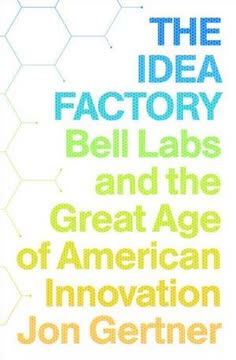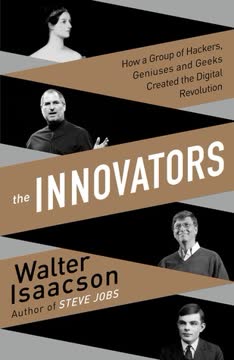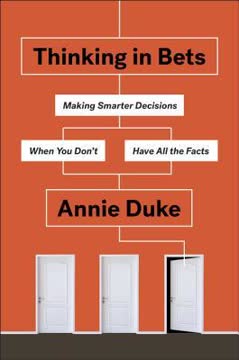Key Takeaways
1. Intel's founding and early years were marked by technological innovation and risk-taking
"Intel was a start-up company, and a lot of us had hopes for its financial success, so I didn't want to let a major effort go into something disastrous."
Pioneering spirit. Intel was founded in 1968 by Robert Noyce and Gordon Moore, who left Fairchild Semiconductor to start their own venture. The company quickly established itself as a leader in semiconductor technology, focusing initially on memory chips.
Key innovations. Intel's early successes included:
- The 1101 SRAM, Intel's first product
- The 1103 DRAM, the first commercially available dynamic RAM chip
- The 4004, the world's first commercially available microprocessor
Risk-taking culture. From its inception, Intel embraced a culture of innovation and risk-taking. This approach allowed the company to stay ahead of competitors and shape the future of the semiconductor industry.
2. The invention of the microprocessor revolutionized the semiconductor industry
"The 8080 really created the microprocessor market. The 4004 and 8008 suggested it, but the 8080 made it real."
Breakthrough invention. The development of the microprocessor, particularly the Intel 4004 and its successors, fundamentally changed the semiconductor industry and paved the way for the personal computer revolution.
Impact on computing. The microprocessor:
- Enabled the creation of smaller, more powerful computers
- Reduced the cost of computing power
- Opened up new applications for digital technology in various industries
Market creation. Intel's microprocessors not only established the company as a technology leader but also created an entirely new market segment. This laid the foundation for Intel's future dominance in the industry.
3. Intel's leadership trio - Noyce, Moore, and Grove - formed a dynamic and sometimes contentious partnership
"Intel is that rare and probably impossible-to-reproduce example of a great company in which the founders began badly and grew in their mutual respect over time."
Complementary skills. The partnership of Robert Noyce, Gordon Moore, and Andy Grove brought together:
- Noyce's charisma and visionary leadership
- Moore's scientific expertise and strategic thinking
- Grove's operational excellence and competitive drive
Tension and growth. Despite their differences and occasional conflicts, the trio's diverse perspectives and skills contributed to Intel's success. Their ability to challenge each other and adapt their roles over time was crucial to the company's growth.
Legacy of leadership. The leadership model established by Noyce, Moore, and Grove set the tone for Intel's corporate culture and management style for decades to come.
4. Moore's Law became the driving force behind Intel's strategy and the tech industry's progress
"Moore's Law guaranteed that change would be so central to modern life that there would be precious little time left for nostalgia."
Predictive power. Gordon Moore's observation that the number of transistors on a chip would double approximately every two years became a self-fulfilling prophecy and a driving force in the semiconductor industry.
Strategic implications. Moore's Law:
- Guided Intel's R&D investments and product development cycles
- Set expectations for performance improvements across the tech industry
- Created a relentless pace of innovation that became central to Intel's corporate culture
Industry standard. Moore's Law became more than just a technological observation; it shaped the entire semiconductor industry's roadmap and influenced broader technological progress.
5. Intel's adaptability and willingness to learn from mistakes were key to its long-term success
"Intel has probably made more mistakes than any company in high-tech history. And there are two good reasons."
Embracing failure. Intel's ability to recognize and learn from its mistakes set it apart from competitors. The company's willingness to take risks and recover quickly from setbacks became a key competitive advantage.
Continuous improvement. Examples of Intel's adaptability include:
- Shifting focus from memory chips to microprocessors
- Recovering from the FDIV bug in the Pentium processor
- Adjusting strategies in response to market changes and competitive pressures
Cultural resilience. Intel's culture of adaptability and continuous improvement, driven by leaders like Andy Grove, enabled the company to navigate challenges and maintain its industry leadership over decades.
6. The company's commitment to R&D and talent acquisition helped it weather industry downturns
"Intel always seemed to emerge from hard times stronger than any other company; it always seemed to have new products ready to introduce, and it consistently snatched away chunks of market share before everyone else emerged from their defensive postures."
Countercyclical investment. During industry downturns, Intel maintained or even increased its R&D investments, positioning itself to emerge stronger when market conditions improved.
Talent acquisition. Intel's commitment to hiring and retaining top talent, even during difficult times, ensured a continuous pipeline of innovation and expertise.
Long-term vision. By focusing on long-term goals rather than short-term market fluctuations, Intel was able to maintain its technological leadership and market position through multiple industry cycles.
7. Intel's marketing strategies, particularly Operation Crush, were crucial in establishing market dominance
"Operation Crush, with Andy Grove's full support, now began to take some of the early revenues on the increased sales and reinvest them in new additions to the 8086 product constellation."
Strategic marketing. Operation Crush, launched in 1979, was a comprehensive marketing and sales campaign designed to establish Intel's 8086 microprocessor as the industry standard.
Key elements of Operation Crush:
- Emphasizing the total system solution rather than just the microprocessor
- Providing extensive customer support and training
- Aggressively targeting key customers and market segments
Market dominance. The success of Operation Crush helped Intel secure its position as the leading microprocessor manufacturer and set the stage for its dominance in the PC era.
8. The personal computer revolution presented both challenges and opportunities for Intel
"The personal computer revolution, the industry that would bring the full world of high tech to the average person, was under way—and for the moment, Intel was locked out."
Missed opportunity. Initially, Intel missed out on the early personal computer market, with companies like Apple choosing other processors for their first machines.
Strategic pivot. Intel's eventual focus on the PC market, particularly its partnership with IBM, became a pivotal moment in the company's history.
Long-term impact. The PC revolution:
- Drove exponential growth in demand for Intel's microprocessors
- Established the "Wintel" duopoly with Microsoft
- Positioned Intel as a central player in the emerging digital economy
9. Intel's corporate culture fostered innovation but also intense pressure and competition
"Intel employees know that they themselves are the smartest people in tech."
High-performance culture. Intel's corporate culture was characterized by:
- A focus on technical excellence and innovation
- Intense internal competition and performance expectations
- The concept of "constructive confrontation" encouraged by Andy Grove
Pressure and rewards. While Intel's culture could be demanding and stressful, it also offered significant rewards for high performers and fostered a sense of pride in the company's achievements.
Long-term impact. Intel's corporate culture played a crucial role in maintaining the company's technological leadership and market position, but also faced challenges as the industry evolved and new competitors emerged.
Last updated:
FAQ
What's The Intel Trinity about?
- Focus on Founders: The Intel Trinity by Michael S. Malone explores the lives and contributions of Robert Noyce, Gordon Moore, and Andy Grove, the three key figures behind Intel Corporation. It delves into their backgrounds and how their unique traits shaped the company and the semiconductor industry.
- Silicon Valley's Evolution: The book details the rise of Silicon Valley as a technological hub, highlighting the transition from early electronics companies to the dominance of semiconductor firms like Intel.
- Impact of Moore's Law: It discusses Moore's Law, which predicts the doubling of transistors on a chip approximately every two years, and its profound implications for technology and society.
Why should I read The Intel Trinity?
- In-depth Historical Insight: The book provides a comprehensive look at the origins of Intel and its pivotal role in the tech revolution, offering readers an understanding of how the founders' decisions shaped modern computing.
- Lessons in Leadership: It offers valuable lessons on leadership, innovation, and teamwork, with insights into the contrasting management styles of Noyce, Moore, and Grove.
- Cultural Context: The narrative situates Intel's story within the broader context of Silicon Valley's culture, making it relevant for anyone interested in technology, entrepreneurship, or business history.
What are the key takeaways of The Intel Trinity?
- Collaboration is Crucial: The book emphasizes the importance of collaboration among the founders, showcasing how their different strengths complemented each other and were vital for Intel's success.
- Embrace Change and Adaptability: It highlights the need for companies to adapt to changing technologies and market demands, as seen in Intel's transition from memory chips to microprocessors.
- The Role of Visionaries: Visionary leaders like Noyce and Moore drove technological advancements and inspired teams, with their foresight being instrumental in Intel's growth.
What are the best quotes from The Intel Trinity and what do they mean?
- “Only the paranoid survive”: This phrase encapsulates Grove's philosophy that constant vigilance and adaptability are crucial for success in the fast-paced tech industry.
- “We didn’t have some commitment that we had to keep some manufacturing line going for, so we weren’t locked into any of the older technologies.”: Reflects Intel's flexibility as a start-up, allowing it to innovate without the constraints of legacy systems.
- “I think we can do something to simplify this.”: Hoff's determination to improve the Busicom design shows the proactive mindset necessary for innovation.
Who were the "Traitorous Eight" and why are they significant?
- Founding Group of Innovators: The "Traitorous Eight" refers to the group of engineers who left Shockley Semiconductor to form Fairchild Semiconductor, including Noyce and Moore.
- Catalysts for Change: This group was instrumental in developing key technologies, including the integrated circuit, which laid the groundwork for modern electronics.
- Legacy of Entrepreneurship: Their actions inspired countless entrepreneurs in Silicon Valley, demonstrating the power of collaboration and risk-taking in innovation.
How did Robert Noyce's background influence his leadership style?
- Preacher's Son: Noyce grew up in a religious household, which instilled in him a sense of community and a desire to be liked, contributing to his charismatic leadership style.
- Intellectual Curiosity: His early exposure to science and technology, combined with a competitive spirit, shaped his innovative mindset and ability to inspire others.
- Conflict Aversion: Noyce's aversion to confrontation often led him to delegate difficult decisions, allowing him to focus on vision and strategy.
What role did Gordon Moore play in Intel's success?
- Architect of Moore's Law: Moore's prediction about the doubling of transistors on a chip became a guiding principle for the semiconductor industry, helping Intel maintain its competitive edge.
- Technical Leadership: As a co-founder, Moore contributed significantly to the development of key technologies at Intel, including the integrated circuit and microprocessor.
- Balanced Management Style: Moore's calm and methodical approach complemented Noyce's charisma and Grove's intensity, fostering a culture of collaboration and innovation.
How did Andy Grove's management style differ from Noyce and Moore?
- Decisive and Direct: Grove was known for his aggressive and confrontational management style, demanding accountability from his team, contrasting with Noyce's laid-back style and Moore's measured demeanor.
- Focus on Performance: Grove emphasized performance metrics and results, ensuring that employees were held accountable for their work, driving Intel's success during challenging times.
- Crisis Management: Grove's ability to navigate crises showcased his strength as a leader, willing to make tough decisions to ensure the company's survival and growth.
What challenges did Intel face in its early years?
- Financial Struggles: Intel faced significant financial challenges, particularly in its early years, as it worked to establish itself in a competitive market.
- Yield Issues: The production of memory chips was plagued by low yield rates, threatening Intel's ability to meet customer demand and maintain profitability.
- Market Competition: Intel entered a rapidly evolving market with established competitors, requiring it to differentiate itself and prove its technological capabilities.
How did the microprocessor change the technology landscape?
- Revolutionized Computing: The microprocessor, particularly Intel's 4004, marked a significant shift in computing technology, enabling the development of smaller, more powerful devices.
- Increased Accessibility: By integrating multiple functions onto a single chip, the microprocessor made computing more accessible and affordable for consumers and businesses.
- Catalyst for Future Innovations: The microprocessor paved the way for advancements in various fields, remaining a core component in countless devices today.
What was Operation Crush and its significance?
- Response to Competition: Operation Crush was Intel's aggressive marketing strategy to regain market share after losing ground to competitors like Motorola.
- Comprehensive Marketing Campaign: The initiative involved a complete overhaul of Intel's marketing approach, emphasizing the value of its products and the support available to customers.
- Long-term Impact: Operation Crush helped Intel recover from a challenging period and established a framework for future marketing strategies.
What lessons can be learned from The Intel Trinity?
- Adaptability is Key: The ability to pivot and adapt to changing market conditions is crucial for success in the tech industry, as demonstrated by Intel's history.
- Value of Team Dynamics: The diverse leadership styles of Noyce, Moore, and Grove highlight the importance of collaboration and leveraging different strengths within a team.
- Embrace Innovation: Continuous innovation is vital for staying competitive, with Intel's commitment to Moore's Law central to its long-term success.
Review Summary
The Intel Trinity receives mostly positive reviews, praised for its comprehensive history of Intel and its founders. Readers appreciate the insights into Silicon Valley's early days and the personalities of Noyce, Moore, and Grove. Some criticize the book's length and repetitiveness, while others find it engaging and informative. The technological details can be challenging for non-experts, but many readers appreciate the appendix explaining key concepts. Overall, it's recommended for those interested in tech history and business biographies.
Similar Books










Download PDF
Download EPUB
.epub digital book format is ideal for reading ebooks on phones, tablets, and e-readers.




